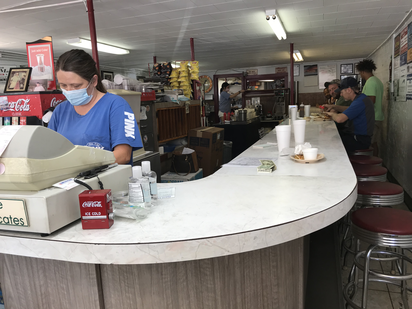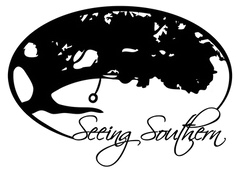 A scene from flyover country A scene from flyover country Sam Burnham, Curator I was watching the latest episode of TrueSouth the other night. I’ve gone back to that episode a few times to revisit a scene that has stuck with me. I’ve thought long on it. I’ve pondered it. Something needs to be said. John T. Edge was sitting at a table with Martha Goodard, owner of the 14th Street Grill in Phenix City, Alabama. She was reluctant to talk. He made the comment that “She feared we were there to pry, maybe even poke fun. But we weren’t.” That’s where the beauty of the show really stood out. John T has a gift. He can walk into a small town dive and connect with the people there. He can win their trust, not by trickery but by sincerity. That’s how he told half the story of that episode. You can’t really blame Martha Goodard. She’s running a hot dog joint in a town still known for its wild past. Even I’ve heard a first hand account of “Sin City” in its heyday. So when a bunch of strangers roll into town with cameras asking questions she, understandably, suspected evil intent. When she finally opened up, she told a story that’s all too familiar with Southerners her age. She spent years working on her daddy’s farm as well as in the cotton mill. Her hands know what work feels like. She has a grit that comes from such a life. But it’s that grit that has kept her restaurant going through the pandemic. It’s honorable. It’s dignified. But this is also a way of life that is frequently maligned in certain segments of the media. There are camera wielding crews that would turn Ms. Goodard and her restaurant into a punchline for a laugh or perhaps to prove some political point. If you’ve lived in The South long enough you’ve seen it. Perhaps you’ve even been the target. This is one of those phenomena that hits places like Atlanta’s West End and the town of West Point quite equally. It’s true in Phenix City or the big city. Poor urban blacks and poor rural whites both know marginalization. They both know exploitation. Their experiences are what fuel their distrust of media. Their experiences are what put them on the defensive. Understanding how someone votes, how they relate to the rest of the world, how they choose to open up or shut down, all depends on understanding exploitation and marginalization. It all comes down to trust and that is earned. When a corporation or a politician exploit someone it is usually private. The anguish is around the dinner table, making a family budget, or losing sleep over making ends meet. When someone with a camera or perhaps a column in The New Yorker exploits someone, it’s very public. It’s humiliating and it drives stereotypes and creates more exploitation. That’s precisely what makes what John T did so powerful. He took the time and connected with Martha Goodard. He used his camera to show her humanity. Instead of some linthead turned hot dog maker, she was more accurately cast as a hardworking entrepreneur who is running a business while caring about the well-being of her employees and meeting the needs of her customers. On TrueSouth she didn’t become a punchline. She became a hero. That is the power of media. It can be wielded to show the world the truth about The South. It can be used to tell the stories of the marginalized, the abused, the ridiculed. It has the power to celebrate and honor just as much as it can humiliate or exploit. There is a lot of talk of unity and healing in the various outlets of the media of late. There are a few ways that this could go. I want to look at two. The first is the now defunct Jeep Super Bowl ad. Bruce Springsteen (who is temporarily 'problematic' at the moment) extolling the virtues of "the middle" and all the ways that we can come together in some sort of peaceful and harmonious ideal. In this scenario we get a cinematic utopia of the rural landscape of the American Heartland. The little chapel, the flying flag, the passing train, and The Boss riding in his Jeep pull at our heartstrings. It is a beautifully made ad. But it is just that. It is just an ad. It puts a pleasant thought in our minds and maybe even makes us want to reach for unity. But Bruce isn't really one to lecture us on unity and meeting in the middle. On the other hand, I know some of John T's beliefs on politics and culture. There are things I know he and I disagree on. I can promise you there are things he and Martha Goodard disagree on. Yet there he sat at a table in her restaurant patiently connecting with her and telling he story to his audience. He portrays her as a responsible employer who cares for her employees and her customers. He tells us that her life and her experiences are important, that they matter to the culture of The South. He went out of his way to make this connection, to earn her trust. He did not have to do this. He could have ridden around Phenix City in a Jeep and gave stirring narration. But he got out of the car. He met Martha Goodard where she was. He didn't just pontificate about unity. He actually practiced it. In the process he made a beautiful story and he made the world a little bit better. That is how we will find unity.
0 Comments
Leave a Reply. |
Sam B.Historian, self-proclaimed gentleman, agrarian-at-heart, & curator extraordinaire Social MediaCategories
All
Archives
November 2022
|




 RSS Feed
RSS Feed
